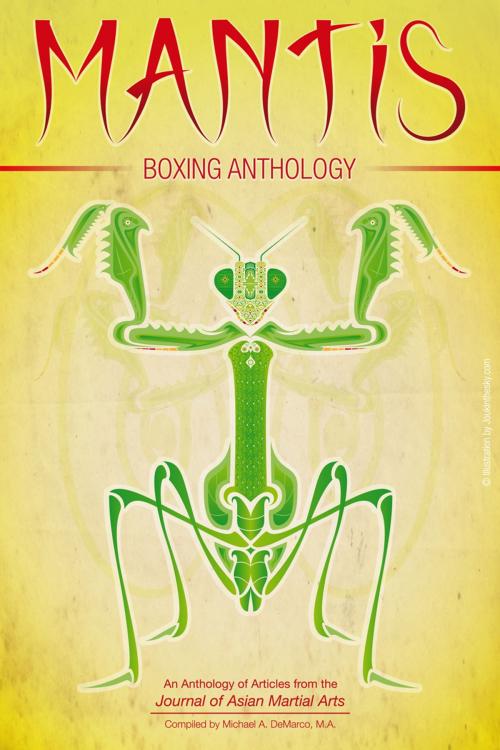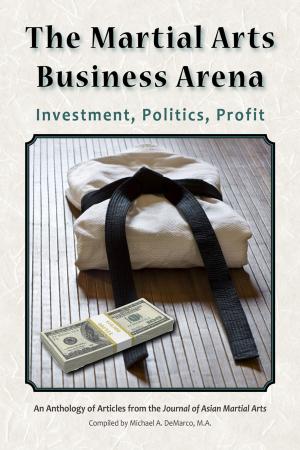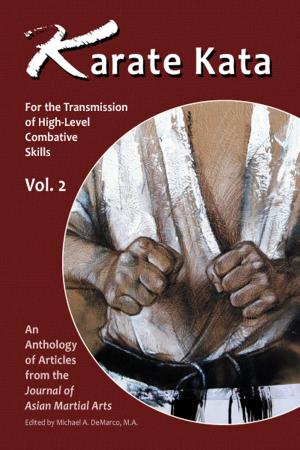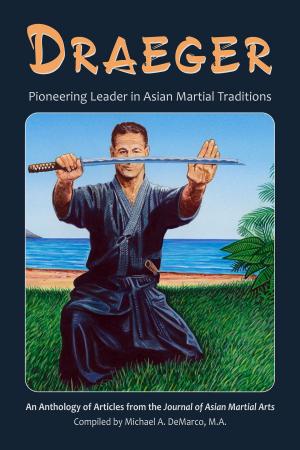| Author: | Martin Eisen, Daniel M. Amos, Dwight C. Edwards, Ilya Profatilov | ISBN: | 1230001394580 |
| Publisher: | Via Media Publishing | Publication: | October 21, 2016 |
| Imprint: | Language: | English |
| Author: | Martin Eisen, Daniel M. Amos, Dwight C. Edwards, Ilya Profatilov |
| ISBN: | 1230001394580 |
| Publisher: | Via Media Publishing |
| Publication: | October 21, 2016 |
| Imprint: | |
| Language: | English |
A praying mantis insect faces any danger regardless of its opponent’s size and strength. If you’ve seen their parade of innate fearlessness, it is easy to see why they have inspired the creation of a Chinese martial art style. This anthology assembles the work of four highly qualified authors who present rare information about praying mantis boxing.
In the first chapter, Dr. Martin Eisen interviews Gin-foon Mark, a noted fifth-generation master of Guangxi Province Bamboo Grove Praying Mantis. Mark discusses training in Chinese temples and compares it with the common training methods found today. The goals, training, and results are very different. The classical methods include developing the senses for fighting, and medical applications.
Dr. Daniel Amos studied praying mantis boxing in Hong Kong. When a person starts to study a martial art, he or she is actually joining a social group to do so. The social structures of Hong Kong martial arts temple cults provide Chinese shunted aside by the dominant status system with an alternative, albeit secondary, system of status achievement. Here, the author presents details of his study and the social setting.
The essence of China’s varied martial styles has often been preserved in writings. At the heart of this heritage are “character formulas”: a short list of characters that is used to establish the most elemental characteristics of a particular martial style. In the third chapter, Dwight Edwards provides an analysis of “The Twelve Character Formula of Seven Star Praying Mantis Boxing.”
In the following chapter, Ilya Profatilov shares the results of years of researching the mantis systems in China. Old manuscripts describe the origins, theory, and curriculum of praying mantis boxing. Additionally, oral folk traditions, legends, fantastic stories, and songs are utlized. Referencing such sources, the author details the history of this realistic combat system, showing that it preserves its original techniques and classical forms. In the final chapter Profatilov discusses a favored close-range technique he recounts from his tutalage under Master Lin Tangfang (1920-2009) in a small village in Shandong Province. He uses the past to inspire his practice, as we hope this anthology will stimulate further research and practice to all readers.
A praying mantis insect faces any danger regardless of its opponent’s size and strength. If you’ve seen their parade of innate fearlessness, it is easy to see why they have inspired the creation of a Chinese martial art style. This anthology assembles the work of four highly qualified authors who present rare information about praying mantis boxing.
In the first chapter, Dr. Martin Eisen interviews Gin-foon Mark, a noted fifth-generation master of Guangxi Province Bamboo Grove Praying Mantis. Mark discusses training in Chinese temples and compares it with the common training methods found today. The goals, training, and results are very different. The classical methods include developing the senses for fighting, and medical applications.
Dr. Daniel Amos studied praying mantis boxing in Hong Kong. When a person starts to study a martial art, he or she is actually joining a social group to do so. The social structures of Hong Kong martial arts temple cults provide Chinese shunted aside by the dominant status system with an alternative, albeit secondary, system of status achievement. Here, the author presents details of his study and the social setting.
The essence of China’s varied martial styles has often been preserved in writings. At the heart of this heritage are “character formulas”: a short list of characters that is used to establish the most elemental characteristics of a particular martial style. In the third chapter, Dwight Edwards provides an analysis of “The Twelve Character Formula of Seven Star Praying Mantis Boxing.”
In the following chapter, Ilya Profatilov shares the results of years of researching the mantis systems in China. Old manuscripts describe the origins, theory, and curriculum of praying mantis boxing. Additionally, oral folk traditions, legends, fantastic stories, and songs are utlized. Referencing such sources, the author details the history of this realistic combat system, showing that it preserves its original techniques and classical forms. In the final chapter Profatilov discusses a favored close-range technique he recounts from his tutalage under Master Lin Tangfang (1920-2009) in a small village in Shandong Province. He uses the past to inspire his practice, as we hope this anthology will stimulate further research and practice to all readers.















